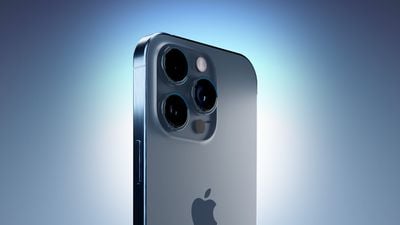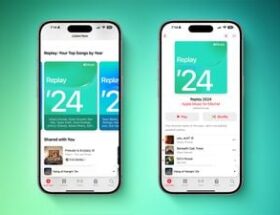Tim Hardwick
Apple's latest iPhone models include several useful camera features, such as portrait mode and photographic styles. But if you only want to use the standard photo mode, there are a few more tools and settings that can improve the composition of your photos and help you take the perfect shot using more traditional methods.

Whether you're the owner of a new iPhone or a longtime user looking to up your photo game, here are six camera tools and settings in iOS worth checking out and experimenting with.
1. Use the rule of thirds
Some time ago, the Apple Camera app introduced a few additional settings to help you align your shots. Central to these settings is the Grid tool, which should be used when applying the rule of thirds. It divides your photo frame into a grid with two horizontal lines and two vertical lines, creating nine equal parts.
The rule of thirds helps direct the viewer's eye to the most important parts of the photo and creates a more harmonious composition. Here's how to overlay a grid on your viewfinder.
- Open the Settings app on your iPhone.
- Scroll down and tap Camera.
- Under Composition, turn on the switch next to Grid.
Here are five things to consider when using a grid. to apply the rule of thirds.
- Identify Key Elements: First, identify the main objects or elements of the scene you want to photograph. This could be a person, a building, a tree, or any focal point.
- Object placement. Place these key elements along the lines or at the points where lines intersect. . For example, if you're photographing a person, you might want to position them along one of the vertical lines rather than in the center of the frame.
- Horizontal Elements: For horizontal elements, such as the horizon in a landscape, align them along one of the horizontal lines. For a more dramatic sky, place the horizon on the bottom line. To emphasize the land or sea more, place it in the top line.
- Balancing the image Use the rule of thirds to balance your photo. If you're placing an object on the left, consider placing something less important on the right to create a sense of balance.
- Experiment. Although the rule of thirds is a guideline, it is not a strict rule. Feel free to experiment with this and see how moving the elements in the frame changes the effect of the photo.
2. Straighten your shots from top to bottom
If you're photographing something from above, such as a plate of food or decoration on the ground, consider using a camera level, as this will help you get a balanced shot without the need to use a tripod or mount. This is also useful for shooting something directly above you, such as an object on the ceiling or in the sky.
The Camera Level Tool used to be part of the Grid Overlay, but Apple has spun off the feature in iOS 17 and now has its own toggle: Open the Settings app on your iPhone, select Camera, then turn on the switch next to Level ” Now you're ready to use it.
- Open the Camera app and set the shooting mode to: Photo, Portrait, Square or Interval, using the sliding menu above the shutter button.
- Point the camera straight down over the subject (or straight up if the subject/scene you want to capture is above you).
- Align the floating crosshair with the fixed crosshair in the center of the screen by adjusting the angle of your phone's camera. Both crosshairs will glow yellow if they are perfectly aligned.
- Press the shutter button to take the photo.
The aligned crosshair will turn yellow (to the right), indicating that the lens is parallel to the ground.
3. Straighten Horizontal Photos
By making the Level tool a separate option in iOS 17, Apple has also included an additional horizontal level for more traditional straight photos.
If enable the “Level” option, a dashed horizontal line will appear on the screen when your iPhone senses that you are lining up for a straight shot and tilts the device slightly away from horizontal. The line appears white while your phone is out of the level, and then turns yellow when you reach level orientation, indicating success.
When the Level setting is enabled (Settings ➝ Camera ➝ Level) try it for yourself. Open the Camera app and try shooting a subject at the right angle and you should see broken horizontal lines in the center of the viewfinder. Straighten the corner to connect the lines and create one yellow line.
The alignment popup appears briefly and only in a narrow range of angles that are close to horizontal (portrait or landscape). so it won't pop up intrusively when you deliberately try to take a photo at an angle.
4. Take burst photos
Burst mode means that the camera on your iPhone takes a series of photographs in quick succession at ten frames per second. This is a great way to capture a fight scene or an unexpected event, as you always have a better chance of getting the shot you were going for.
To shoot in burst mode, go to Settings ➝ ” Camera” and turn on Use volume up for continuous shooting, then simply press and hold the Volume Up button in the Camera app, and your iPhone will take a series of photos in quick succession. Note that the counter increases inside the on-screen shutter button as long as you hold down the Volume button. Indicates how many frames are being captured in the current sequence. Simply lift your finger off the volume whenever you want to end a series of photos.
When you take a series of burst photos, they automatically appear in the Photos app under the album name “Breaks.” You'll also find them in your main photo library. Follow the link to learn how to view and select the best photos in the series in the Photo section. application.
5. Mirror your selfies
When you take a selfie on your iPhone With the Camera app, it automatically flips or flips the image, turning it into an inverted version of the mirror image you see in the preview before you shoot.
This may look strange. , as it makes a big difference in how the selfies will look. It can also be annoying because most third-party social media apps automatically take mirror selfies, which means you'll be more likely to get used to the mirroring feature than the upside-down selfies your iPhone takes.
Luckily, you can change the default behavior of the Camera app, which is to get the mirror selfie you're probably more used to seeing. Here's how to do it.
- Launch the Settings app, then scroll down and select Camera.
- Toggle the switch further Switch the Front camera mirror to the green ON position.
That's all you need. From now on, when you use the Camera app to take a selfie, you'll take the same photo you saw in the app's preview mode.
6. Behind the scenes view
On iPhone 11 and later models have an additional camera setting that lets you see beyond the frame of your photo, so you can adjust the alignment of photos (and videos) without having to resort to cropping.
When the Out of Frame View setting is enabled, when you shoot with a wide-angle lens or a telephoto lens, the camera will simultaneously shoot with the next largest sensor. So the wide lens is active when you shoot with a telephoto lens, and the ultra-wide lens is active when you shoot with a wide-angle lens.
- Open the Settings app.
- Scroll down and tap Camera.
- Under Composition, turn on the switch next to View outside”. Frame.
You may have to experiment with zoom levels to switch between lenses, but you'll know the feature is active when the camera interface turns semi-transparent. -transparent to show the surroundings outside the viewfinder.
Tag: Photography36 comments










